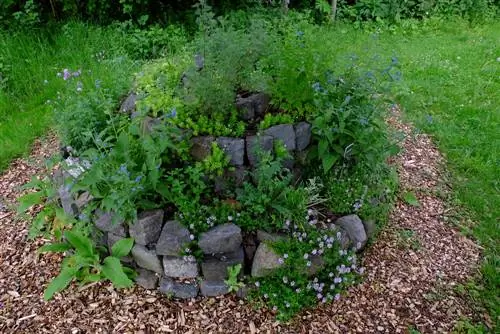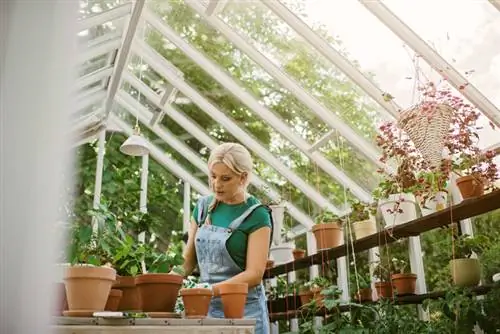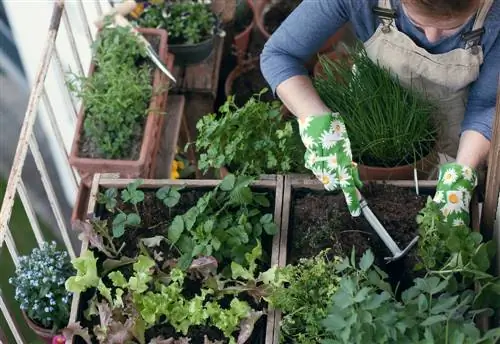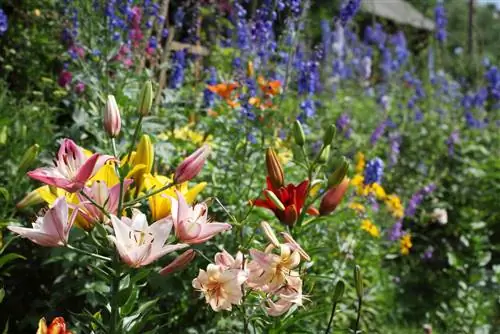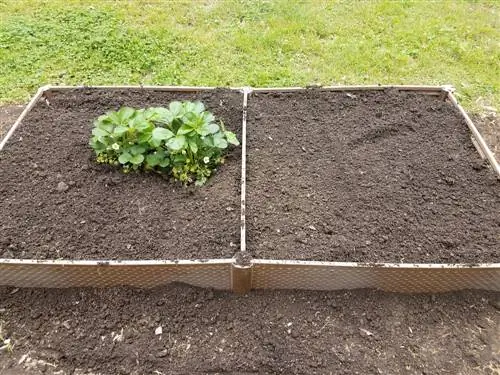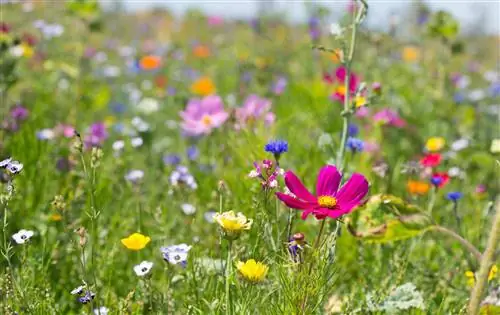- Author admin [email protected].
- Public 2023-12-16 16:46.
- Last modified 2025-06-01 06:02.
Designing a herb bed requires a plan. After all, it should bring you good returns and, ideally, look beautiful. Below are a few examples of how to plant herbs as a guide!
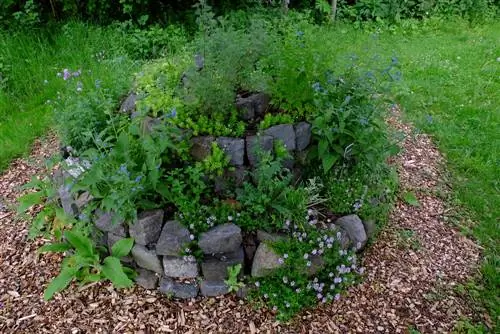
How do I create a herb bed correctly?
To create a herb bed, first choose suitable herbs and plan the shape of the bed. Consider site needs and plant compatibility. Herb snails, raised beds and plant stones are popular ideas. Use appropriate substrates and place sun lovers higher.
Planting herbs - you need a good plan
Herbs are currently booming for a reason. After all, the aromatic plants are not only a diverse and extremely he althy addition to the kitchen. Many tried-and-tested and new ideas are also currently spreading for creative homemade things in the culinary and personal care sectors.
In addition to using them as cooking spices, you can use herbs for exquisite delicacies such as liqueurs or your own vinegars, or for homemade cosmetics and care products such as soaps, bath pearls and essential extracts.
Examples of possible herbal uses:
- cooking seasoning
- Refining delicatessen
- Homemade cosmetics and care products
Instructions for Planting a Herb Bed
To create a herb bed according to your usage plan, you should follow the following steps:
- Selection of herbs
- Plan for the type of bed
Selection of herbs
This decides, on the one hand, what you want to do with your aromatic plants. If they are to be used primarily in the kitchen, they should of course correspond to your personal taste and cooking habits. If you are looking for special uses in the form of healing extracts or soap flavoring, appropriate varieties with healing effects or an intense scent are the best choice.
Plan for the type of bed
Above all, do you want a lush and aromatic yield? Then a functional herb bed with an easily accessible and practical structure or in the form of a raised bed is suitable. Would you also like aesthetic added value for your garden? Then various herb bed shapes are recommended, which you design with stones, structure ideas and additional decor.
What you need to consider when planting
Basically, you can of course plant the herbs that you like and taste the most. However, in order to cultivate them successfully, you should still have a few rules in mind. This particularly applies to:
- The choice of location
- The neighborhood of plants
When it comes to location, it's best to base it on the needs of the herbs that should find their way into your aroma oasis. Basically, a sunny place is good for most herbs, but especially for Mediterranean varieties such as lavender, oregano, basil or thyme. Native herbs such as fennel, chamomile, mint or parsley can also thrive in partial shade.
Of course, the location requirements also determine which herbs you can best combine with each other in the bed. But there are also certain individual tolerances or intolerances on a vegetative level. For example, perennial varieties do not like to be next to annual herbs if this means that the soil next door is rearranged every year. In addition, annual and perennial herbs have very different water requirements.
The following combinations complement each other particularly well in terms of the ground conditions and the above-ground characteristics:
- Rosemary, thyme and oregano
- Basil, chives and parsley
- Lemon balm and pimpinelle
- Sage and Oregano
Instructions for 3 herb bed ideas
- Herb snail
- Raised bed
- Planting stones
Herb snail
The herb snail is particularly suitable for Mediterranean, heat-loving herbs, as it is traditionally structured with heat-retaining natural stones. At the same time, it allows the planting of herbs with different soil and climate requirements thanks to the descending structure.
You need for the herb snail
- Natural stones
- potting soil
- Sand
- Rubbish
- Compost
Create a small hill with a maximum diameter of 2 m and a height of 80 cm, which you structure with a spiral wall made of flat natural or field stones. Fill the gaps with a mixture of potting soil, sand and rubble, such as crushed lime. In the lower part you can make the substrate a little richer in humus with compost - for local herbs such as chervil or parsley.
Raised bed
The raised bed has two main advantages: It takes the strain off your back during processing and harvesting and allows for a generously enriched and heat-insulating substrate. It is therefore particularly suitable for nutrient-hungry herbs such as chives and wild garlic, basil, lovage, lemon verbena or mint.
You need for the herb raised bed:
- A finished box or wooden material to build yourself
- potting soil
- Compost
- Sand
For the herb raised bed, as with vegetable or flower raised beds, you can either use a prefabricated raised bed box (€58.00 on Amazon) or play the craftsman yourself. Instructions for building it yourself are a separate chapter - and are widely available online. However, in contrast to raised vegetable beds, the filling should not be quite as nutrient-rich - because even the more nutrient-requiring varieties are comparatively frugal compared to many types of vegetables.
Therefore, avoid layers of horse manure etc. when mixing the soil and simply make do with a little compost. However, a little drainage through sand should still be guaranteed.
Planting stones
You don't need to put a lot of effort into a herb bed made of plant stones - the typical half-ring-like stones can be easily layered on top of each other in a terrace-like manner on a slope that is as sun-oriented as possible, leaving individual troughs free for different types of herbs. Of course, you can also fill these with individual substrate compositions depending on your nutrient requirements.
Similar to the herb snail, southern herbs should be planted in higher troughs because of their increased sun requirement.

